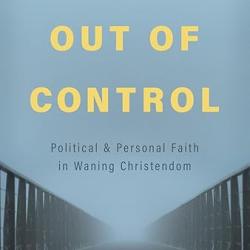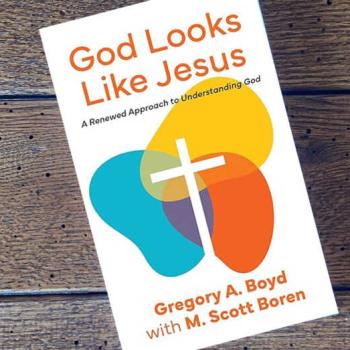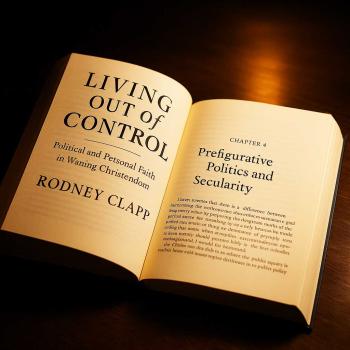How to Use Hymns as “Teachable Moments”—Even When You Disagree with the Lyrics
Recently someone asked me to give some examples of how I would use hymns as teachable moments in a congregational setting. The background to this request (for those of you who didn’t read my earlier blogpost about hymn lyrics) is this. Several times here I have argued that hymn-singing is problematic in contemporary American church life. For one thing, it has largely dropped away in favor of “praise and worship” choruses many of which are sung by the “worship team” with very little concern for whether the majority of the congregation can actually sing them. (Many were written for performance, not congregational singing.) Also, hymns tend to contain much more theology, doctrine, and biblical allusions than praise and worship songs. Finally, many hymns (to say nothing of praise and worship songs) contain theologically questionable lyrics. Sometimes those who choose them for a worship service overlook the questionable lyrics. Sometimes they change the lyrics based on their own or someone’s theological qualms. But, probably most often, nobody even notices the lyrics’ theological problems.
Here is an obvious example I have mentioned before. H. Ernest Nichols’s “We’ve A Story to the Tell to the Nations” was written in 1896 and is still sung by many American Christian congregations—often on “missions Sunday.” The lyrics, however, clearly express postmillennialism—the belief that Christians, the church, will bring about the Kingdom of God on earth before the return of Christ. That was a popular belief in the 18th and 19th centuries—times of great optimism. Postmillennialism is now rare, however, and most American Christians would reject it in favor of either amillennialism or premillennialism. Still, even churches that are officially doctrinally premillennial sing the song which demonstrates that many people do not think about the words or messages of a song.
Years ago I was in a worship service where the preacher spoke passionately about the soon return of Christ, emphasizing that all prophecies of events leading up to it had been fulfilled and that Christ could return “tomorrow.” His point was that the people in the congregation should be looking forward to Christ’s imminent and premillennial return and should be prepared for it. After the preacher sat down the worship leader asked the congregation to stand and sing “We’ve A Story to Tell to the Nations.” I almost laughed aloud; I had to stifle it. Irony always strikes me as funny. After the benediction I approached the worship leader, whom I knew personally, and asked him about the contradiction between the hymn and the sermon. It took a while to explain it to him. Once he understood he said to me “Only you would notice that.”
I am strongly convinced that those who choose hymns for worship should consider the words and theological messages. And I urge congregants to think about the words and messages.
One way I go about attempting to make this difference is by taking my theology students to the chapel to sing hymns. Yesterday, as we were studying the doctrine of salvation, I had my students sing “And Can It Be?” by Charles Wesley. In my opinion it is one of the most profoundly theological hymns. After we sang it I went through the hymn with them, line by line, phrase by phrase, talking about the images and theology. For example, “Thine eye diffused a quickening ray” refers to prevenient grace.
If I were leading worship and that hymn were chosen I would do one or both of two things—given that many contemporary worshipers will not understand the images without some explanation. I would consider putting a note in the worship folder/bulletin explaining the hymn: “This hymn is Charles Wesley’s poetic testimony of his salvation and contains imagery pointing to various gracious works of God on our behalf and in us as well as of our responses to them. ‘Nature’s night’ and ‘dungeon’ are images of our condition of being helpless to save ourselves because of the effects of original sin. ‘Quickening ray’ is a poetic reference to God’s prevenient, assisting grace, that liberates our sinful wills—‘chains’—from bondage to sin. The hymn emphasizes that God’s liberating, assisting grace goes before and enables our free decision to follow Christ in faith. All glory for salvation goes to God; he does all the work from beginning to end. All we do is accept what he has done for us and follow him.”
While leading the singing I might stop between verses and say a few words about the images in it and its message: “This is a great testimony hymn; it expresses our sinful condition apart from God’s grace, God’s provision to heal our condition through the cross of Jesus, God’s coming to us with healing power to liberate us from the bondage of the will to sin, our responsibility to decide to allow God to rescue and save us, and the great liberation from condemnation we enjoy by God’s grace.”
By the way, both Calvinists and Arminians sing “And Can It Be.” The last time I visited Bethlehem Baptist Church, when John Piper was still pastor, it was sung by the congregation. I am confident those who plan worship at that church do not choose hymns without regard to their theological meanings. And no words were changed. (I wrote on my visitor’s card “Thanks for singing my favorite Arminian hymn!”) Calvinists simply interpret the “quickening ray” as irresistible grace. That’s not what Charles Wesley meant by it, but he would be glad, I’m sure, that even Calvinist churches still sing his great hymn!
There are songs and hymns I would not choose for my congregation to sing in worship, but I occasionally have my students sing them (or sing them to my students) as examples of bad theology put to music. For example, when we are studying Pelagianism and semi-Pelagianism I mention (occasionally sing parts of) “The Savior Is Waiting,” especially the lyrics “If you’ll take one step toward the Savior, my friend….” I am not accusing Ralph Carmichael, whose songs I grew up singing, of heresy! However, without explanation that basically contradicts the lyrics, the song has the effect of reinforcing and supporting the already latent semi-Pelagianism of much American Christianity. (I call it “Touched by an Angel theology.” In one episode the angel with the Scottish accent tells a dying man who says God cannot forgive him “If you reach up to God he’ll reach down to you.” The frequent, if not constant, theme of the show was that the initiative in salvation is ours and God responds.)
One song I would never ask a congregation to sing is the one I mentioned above: “We’ve A Story to Tell to the Nations” and that because it is so strongly postmillennial that I don’t see any way to use it as a teachable moment without blatantly contradicting its basic message. However, I do use it as an illustration in classes—of postmillennialism put to music.
So how would I handle a hymn whose lyrics I disagree with or that I know some in the congregation disagree with? In my previous post I talked about the problem many are having with Keith Getty’s and Stuart Townend’s great contemporary hymn “In Christ Alone.” Some hymnals have simply changed the words to avoid offense or express a different view of the atonement. Instead, were I leading the congregation in singing it, I would 1) Put a note in the worship folder or bulletin about “the wrath of God was satisfied” and/or 2) Briefly talk to the congregation about theories of the atonement, emphasizing that these lyrics simply express a common, traditional belief of many Christians that God’s wrath against sin (not necessarily against sinners) was dealt with by God himself on the cross—his love motivated him to suffer the pain of forgiving the sins of humanity that offended his righteousness.
Notice that the offending (to some) lyrics DO NOT actually say that God’s wrath was against people; they only say “God’s wrath.” When I sing the song I interpret it as God’s wrath against sin and not that God took out his vengeful wrath on poor, innocent Jesus, a mere man who didn’t deserve it, but that God, in the person of his Son, second person of the Trinity, of the same substance as the Father, voluntarily chose to suffer the pain of reconciling the wrath of God with his love for sinners such that “love won” on the cross. If I had time and opportunity I would explain that to the congregation once—rather than change the lyrics or simply ignore the offense a possible misunderstanding could cause sensitive souls who do not believe God’s wrath is aimed at sinners or that the cross changed God from wrathful to loving. Nothing in the lyrics themselves include those ideas.
Again, I ask, are we going to expunge all references to the wrath of God from worship just because some people misunderstand the idea? Are we going to expunge all references to the wrath of God from worship when the Bible is full of it?
In my opinion, again, much of the problem of congregational singing arises from the following facts: 1) Most people do not even think of the words they are singing, 2) Those who do often misinterpret the words, 3) in most contemporary congregations hymns are sung in a theological vacuum.
Sadly, in many congregations even those who choose the hymns/songs and lead in their singing give very little consideration to the words and messages. This is an extreme example, but nevertheless telling about this problem. Years ago the worship leader (not of the church I presently attend!) asked the congregation to sing Longfellow’s famous Christmas carol “I Heard the Bells on Christmas Day”—but only the first, third and sixth verses. The sixth verse, as you may know, is extremely pessimistic; without the seventh verse the hymn ends on a very dour note. The worship leader had obviously not even thought about the song before choosing it! The same worship leader, on Easter Sunday, had the congregation sing “Up from the Grave He Arose!” but only the first verse. There are only two verses in most hymnals and the first verse leaves Christ in the tomb!
My plea is for worship planners and leaders to think of hymns as theological expressions and choose them with biblical and theological discernment and use them as teaching tools—especially when lyrics may be obscure to most people. Don’t rush to change the lyrics to dumb them down or make them palatable. And certainly don’t drop them in favor of shallow ditties sung ten times.
Note: Feel free to respond with a comment or question, but (!) 1) Keep it brief, 2) Move the conversation forward, 3) Avoid clichés or unreflective statements, 4) Be kind even if you disagree, and 5) Stick to the subject, respond to what I actually said, not what I didn’t actually say, and don’t misuse my blog to promote your own personal agenda.













